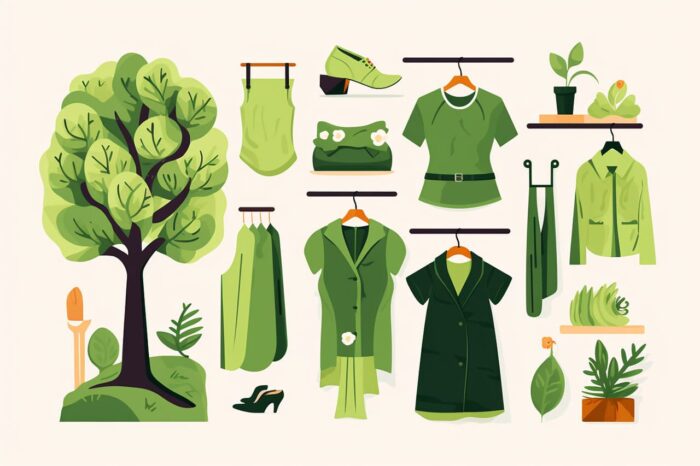Step 1: Mindful Fashion Choices
So you want to build an eco-friendly wardrobe? Well, the first step is to make some mindful fashion choices. This means taking a moment to think about what you really need and what you can do without. The heart wants what it wants, but sometimes the heart needs a reality check. And when it comes to fashion, that reality check involves considering the environmental impact of our clothing choices.
Think about whether you really need that trendy new top or if you can make do with what you already have. And if you do need something new, try to choose versatile pieces that can be mixed and matched with other items in your wardrobe. This way, you’ll get more wear out of them and reduce the need for constant shopping.
Step 2: Embrace Secondhand Treasures
Now that you’ve made some mindful fashion choices, it’s time to embrace the world of secondhand treasures. The best way to make sure that you’re going to have a wardrobe full of unique and interesting pieces is to buy them secondhand.
When you shop secondhand, not only are you giving a new life to pre-loved items, but you’re also reducing the demand for fast fashion. So head to your local thrift store, explore online vintage shops, or organize a clothing swap with your friends. You never know what hidden gems you might find!

Step 3: Sustainable Fabrics & Ethical Brands
Next up, it’s time to think about the fabrics and brands you choose for your eco-friendly wardrobe. Choosing sustainable fabrics and ethical brands is like eating your vegetables – it’s good for you and for the planet.
Look for fabrics like organic cotton, hemp, and linen, which are more sustainable than conventional materials. Avoid synthetic fabrics like polyester and nylon, as they are made from non-renewable resources and contribute to pollution. And when it comes to brands, do your research and support companies that prioritize ethical production practices and fair wages for their workers. By making these choices, you’ll be making a positive impact on the fashion industry.
Step 4: Caring for Your Eco-Friendly Wardrobe
Lastly, it’s important to take good care of your eco-friendly wardrobe. A little love and care can go a long way in extending the life of your clothes. And he couldn’t be more right.
Start by washing your clothes less frequently, as this not only saves water but also helps preserve the colors and fabrics. When you do wash, opt for cold water and eco-friendly detergents. Avoid using the dryer whenever possible and instead, hang your clothes to air dry. This not only saves energy but also reduces the wear and tear on your clothes.
Additionally, learn some basic sewing skills so you can mend any small tears or loose buttons. And when it’s time to say goodbye to a garment, consider upcycling it into something new or donating it to someone who can give it a second life.
By following these steps, you’ll be well on your way to building an eco-friendly wardrobe that reflects your values and helps protect the environment. So let your eco-friendly fashion choices be a reflection of your commitment to a better world.